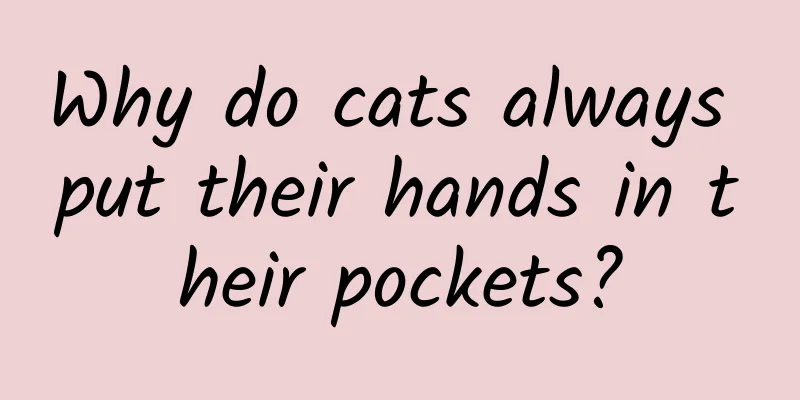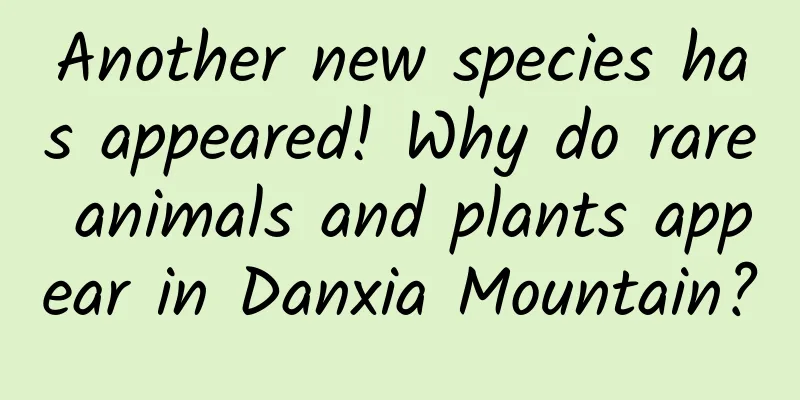Why do cats always put their hands in their pockets?

|
Ever since we got a cat at home, there has been a constant thought in my mind: What do the cat’s actions mean? Why would it stop at my keyboard while I was writing? Why would it bite me lightly (heavily) or lightly (hardly) while being coquettish? Why would it squat on the balcony and mutter to itself while looking outside? They may think their actions are ordinary, but to me, they are all so mysterious. Recently, cats have discovered new postures in many places at home: they lie down with their front paws tucked under their chests, like a ball of fur, their ears facing forward, their eyes blurred, just like a hen hatching eggs (not really). This posture is commonly seen, but not limited to, under the bed, on the sofa, in the cat's nest, and next to their mother (cat note: the female poop scooper). My Master Huang Gua | Provided by the Author I once called this position "missing upper limbs," but a simple search shows that these four words are almost non-existent when used to describe cats. On the Chinese Internet, people often use "cuishoushou", "catcuishoushou", "peasantcuishou" to describe this position, while English-speaking netizens call it "cat bread", "egg hatching", "roast chicken" (?), etc. As for domestic cat researchers - they call it lying down. The little egg yolk in the editor's hand | Provided by the editor After learning that putting hands in pockets is not an original skill of my cat, the thought came to my mind: So, what does it mean by doing this? Fortunately, among the countless mysterious behaviors of cats, scientists have a relatively clear understanding of the practice of putting hands in their pockets. Explanation 1: Letting your guard down Generally speaking, a cat lying in this position means that it feels comfortable and relaxed. For a cat, cat claws are a magical weapon for fighting or running away. Rolling them all under the body means that the cat feels safe and secure in the present world and there is no threat in front of it. This also explains why the "site of the crime" with hands in pockets is often the area that cats like to stay in the house the most. If the cat puts its hands in its pockets while yawning or stretching, it means that the cat is in a comfortable state. At this time, they may even let the owner pat them hard (author's note: it works after personal testing). According to cat behaviorist Jackson Galaxy, in addition to domestic cats, various "Old World cats" native to Africa, Europe and Asia, such as fishing cats and servals, also lie down in this posture, while "New World cats" native to the Americas, such as Joe's cat, are more accustomed to placing their paws outside their bodies when lying down. Old World cat (left) vs. New World cat (right) | Total Cat Mojo Explanation 2: Needed to keep warm Dr. Mikel Delgado, who studies the social behavior of domestic cats at the University of California, Davis, believes that in addition to being a sign of relaxation for cats, putting their hands in their pockets may also have practical significance for keeping warm. Within a specific temperature range, homeothermic animals can keep the energy spent on regulating metabolism and maintaining body temperature at a minimum level. This temperature range is called the "thermal neutral zone." For domestic cats, this range is 30 to 38 degrees Celsius, and both the upper and lower limits are higher than humans. The temperature that people are comfortable with in air-conditioned rooms is usually too low for kittens. So if you see a cat with its hands in its lap, don't rush to give yourself a chicken drumstick. Feel the temperature first: if you feel it's a little chilly, then the cat must be cold. If it puts its tail close to its side while putting its hands in its lap, it's more likely that it's lying like this to reduce heat loss. Explanation 3: Injury and pain The third possibility for a cat to put its hands in its pockets, and the one that cat owners least want to encounter, is that the cat is in pain because of injury or illness, so it chooses to curl up. If your cat is folding his hands because of an injured front paw, you may notice him staggering slightly when he returns to a standing position from lying down. Cats with feline chronic kidney disease will also often lie down with their hands in their lap, especially when their condition suddenly worsens. Unlike cats who lap their hands in their lap to relax, sick cats often lap their hands with their necks stretched forward and their heads drooping. Cats are very good at hiding their pain, so cat owners need to observe their various behaviors carefully. Once they find something wrong, they need to take the cat to see a veterinarian as soon as possible. The difference between humans and cats Unlike the two-legged animals that take care of them, cats do not have rich facial expressions and cannot reveal their motivations through their expressions. This is why stupid cat owners like me always think that cats are neurotic in everything they do. But in fact, cats can communicate with people and other cats through subtle body language. The position and shape of the tail, the direction of the ears and whiskers, the movement of the eyes, and the body posture all tell the cat's emotions and physical condition. For example, staring at a cat straight in the eye is a challenge rather than a sign of affection, and slow blinking, which seems very strange to humans, is actually a positive emotional communication for cats. Do you love me? | giphy I know very well that I can't find the answer to every "What does the cat mean by doing this?", but maybe as long as I try to understand a little more and think a little more from the cat's perspective, the cat will like me a little more. I thought so and cast a tentative look at the cat. And sure enough, it didn't even look at me. It just meowed softly and went straight to the litter box. References 1. Stanton LA, Sullivan MS, Fazio JM. A standardized ethogram for the felidae: A tool for behavioral researchers. Applied Animal Behavior Science. 2015;173:3-16. 2. Galaxy J. Total Cat Mojo: The Ultimate Guide to Life with Your Cat. 1st ed: TarcherPerigee; 2017. 3. Paoletta R. Why Do Cats Look Like Loaves of Bread Sometimes? We Asked a Scientist: Inverse; 2017 [Available from: https://www.inverse.com/article/38682-why-do-cats-look-like-loaves-of-bread. 4. Council NR. Nutrient requirements of dogs and cats: National Academies Press; 2006. 5. Humphrey T, Proops L, Forman J, Spooner R, McComb K. The role of cat eye narrowing movements in cat–human communication. Scientific reports. 2020;10(1):1-8. Author: Calo Editor: Yakumo |
<<: This plant "used to feed pigs" changed the whole world
>>: Things about naming asteroids: Stars that cost money are not good stars
Recommend
Open the window to see green, push the door to enter the garden, this forest city is full of greenery and gold!
Green is the most attractive background color of ...
Can you make up for your sleep debt?
For many people, sleeping in on the weekend is on...
Xigua Video product analysis report!
As a product of Toutiao, Xigua Video has been aro...
iOS 16 beta 7 released, iOS 16 official version is coming
Only one week after the last beta version, iOS 16...
Spanning 300 million years of history! Uncovering the past and present of this yellow color in golden autumn!
Image source: Palace Museum In China, ginkgo is t...
Tencent Micro Game Console Review: More Suitable for Heavy Mobile Game Players
Since the ban on game consoles was lifted, the ga...
Speculate on some trends in content marketing in 2017!
Some time ago, the Content Marketing Institute (C...
The psychology of playing dead
© Angelica Alzona Leviathan Press: For easier und...
JD.com and Taobao have been revamped! The golden age of content operation is here!
In fact, I had been wanting to make this alarmist...
How much does a POS machine cost? Is there any free POS machine?
Nowadays, not only units are applying for POS mac...
Why deploy influencer marketing?
Although it seems that the term " influencer...
How can a professional community with a small platform and a small audience achieve a cold start?
Community operation is actually a full-stack oper...
Is there any connection between periodontitis and bad breath?
Bad breath has always been a health problem that ...
Eleven Trends Predicted for New Consumer Brands in 2022
The collective rise of new consumer brands is und...
A collection of commonly used tools for short video live streaming!
1. Editing tools (there are many tools, and I rec...









